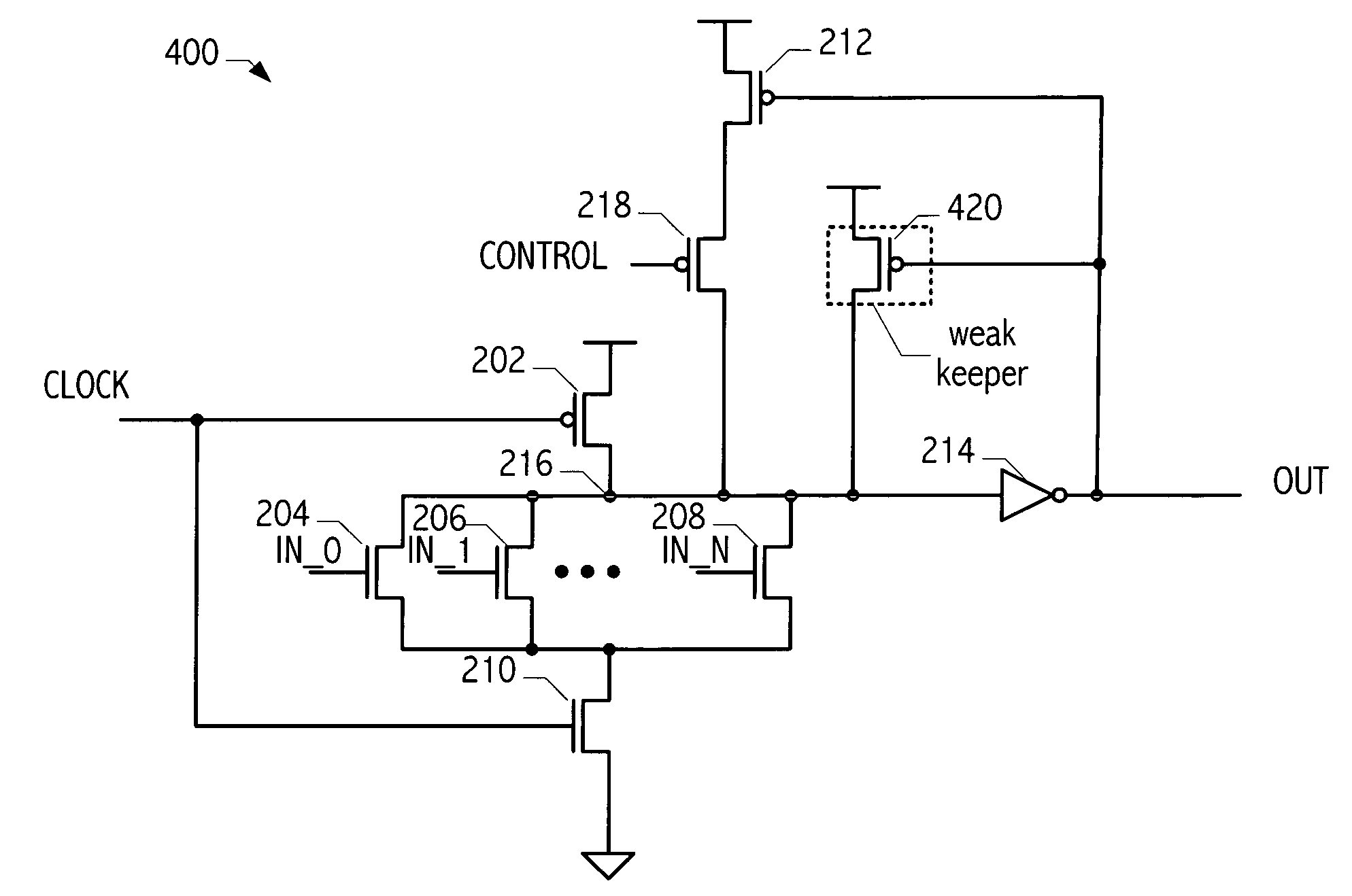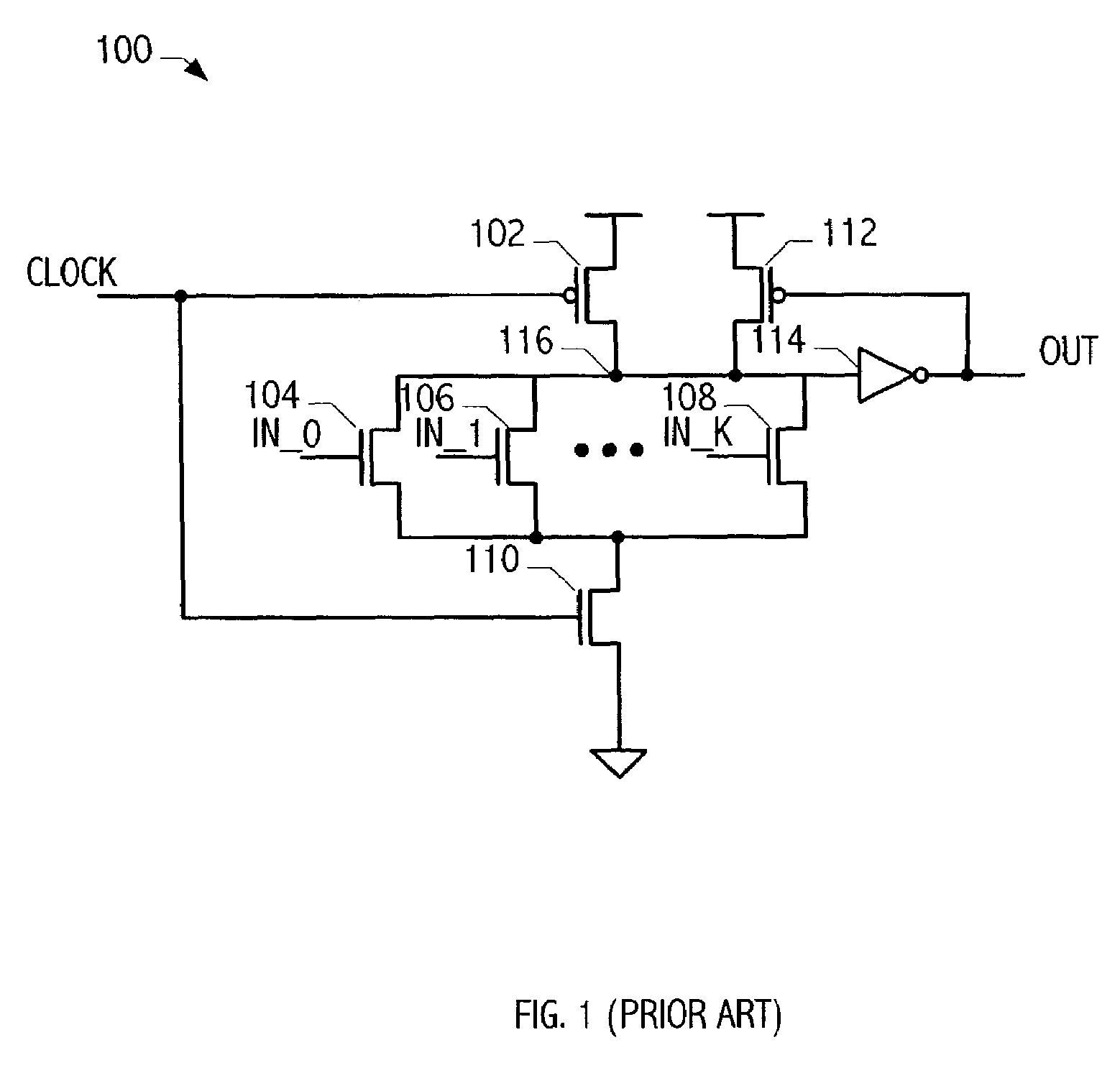Pulsed dynamic keeper gating
a dynamic keeper and keeper technology, applied in the field of dynamic circuits, can solve the problems of circuit producing incorrect output values at the output node, static leakage current exists, and weak keeper may be too large to counteract, so as to reduce the effect of effective keeper circuit strength and protection from nois
- Summary
- Abstract
- Description
- Claims
- Application Information
AI Technical Summary
Benefits of technology
Problems solved by technology
Method used
Image
Examples
Embodiment Construction
)
[0021]Referring to FIG. 2, circuit 200 includes keeper 212 in series with keeper gating device 218. Keeper 212 is a p-transistor designed to have a gain sufficient to offset the effects of leakage currents in evaluation circuits with a large number of pull-down devices. The size of keeper 212 may be determined by simulating circuit 200 and determining the W / L ratio of keeper 212 necessary to achieve the appropriate gain, or by any other method for sizing circuit devices known in the art. The additional capacitance of keeper 212 may slow down circuit transitions due to additional capacitance introduced by keeper 212. Pull-down devices 204–210 may be unable to overcome keeper 212 during a time interval in which the inputs are expected to switch. To alleviate these detrimental effects on performance, keeper gating device 218 effectively disables keeper 212 during the time interval when the inputs are expected to switch. In most functional cases, inputs IN_0, IN_1, . . . IN_N switch du...
PUM
 Login to View More
Login to View More Abstract
Description
Claims
Application Information
 Login to View More
Login to View More - R&D
- Intellectual Property
- Life Sciences
- Materials
- Tech Scout
- Unparalleled Data Quality
- Higher Quality Content
- 60% Fewer Hallucinations
Browse by: Latest US Patents, China's latest patents, Technical Efficacy Thesaurus, Application Domain, Technology Topic, Popular Technical Reports.
© 2025 PatSnap. All rights reserved.Legal|Privacy policy|Modern Slavery Act Transparency Statement|Sitemap|About US| Contact US: help@patsnap.com



